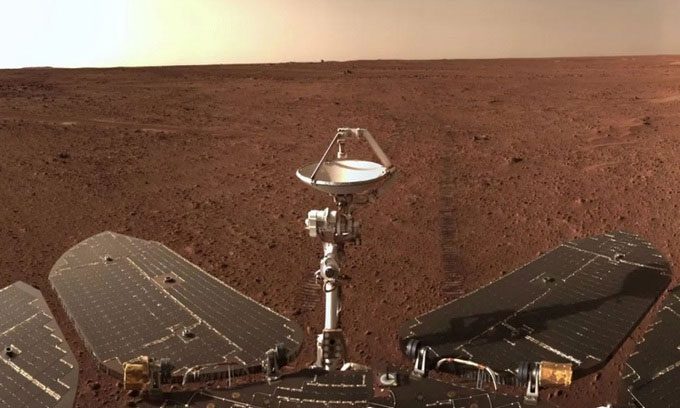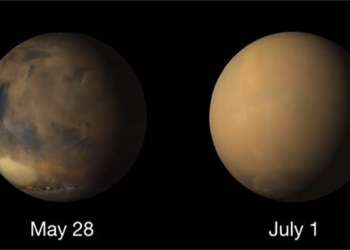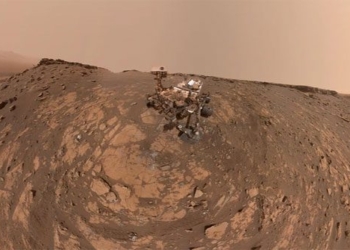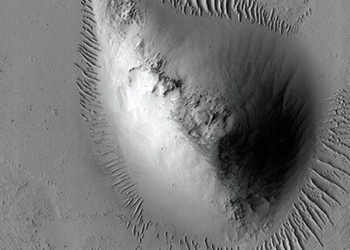The autonomous rover Zhuque-1 has sent back panoramic images of the surrounding area in the Utopia Planitia region on Mars.
Engineers are preparing for the rover to enter a safe mode for over a month this autumn. The six-wheeled solar-powered rover has traveled 1,064 meters since it first rolled onto the surface of the red planet on May 22. However, from mid-September to the end of October, Zhuque-1 and the Tianwen-1 orbiter will switch to safe mode due to charged particles from the Sun that could affect communications with Earth.

Zhuque-1’s solar panels and communication equipment appear in the panoramic image. (Photo: CNSA)
To prepare for this short hiatus, Zhuque-1 has paused its wheels to observe the surrounding area with its panoramic camera. The images sent back show the rover with its solar panels and antenna near a sand dune that scientists on the mission want Zhuque-1 to analyze. Some distant objects can be seen on the horizon of the image, including the protective shield from when the rover landed. Zhuque-1 passed by where this component fell in July 2021.
Since landing on May 14 and starting operations a week later, Zhuque-1 has moved southward, analyzing various rock types, sand dunes, and other features. The Tianwen-1 orbiter passes over Zhuque-1 once a day to transmit data back to the mission control center in China. The National Astronomical Observatories of China (NAOC) has also released images from the high-resolution camera on Tianwen-1, capturing Zhuque-1’s journey from the landing site, including the tracks left by the rover on the ground.
A new study on the geological features in Zhuque-1’s landing area has identified many landforms that scientists on the mission are eager to explore. According to the study, the rover will examine wind-formed ridges or depressions created by erosion, particularly mysterious concave cavities. One of the main objectives of the research team is to use Zhuque-1’s ground-penetrating radar to determine the thickness and distribution of soil near landforms believed to be created by water or ice beneath the surface. The presence of water has profound implications for researchers to better understand the climate history of Mars as well as potential resources for future crewed missions.
Both the Zhuque-1 rover and the Tianwen-1 orbiter will pause operations for about 1.5 months. The two vehicles will automatically conduct status assessments, self-monitor, and repair any malfunctions until communications are restored.




















































